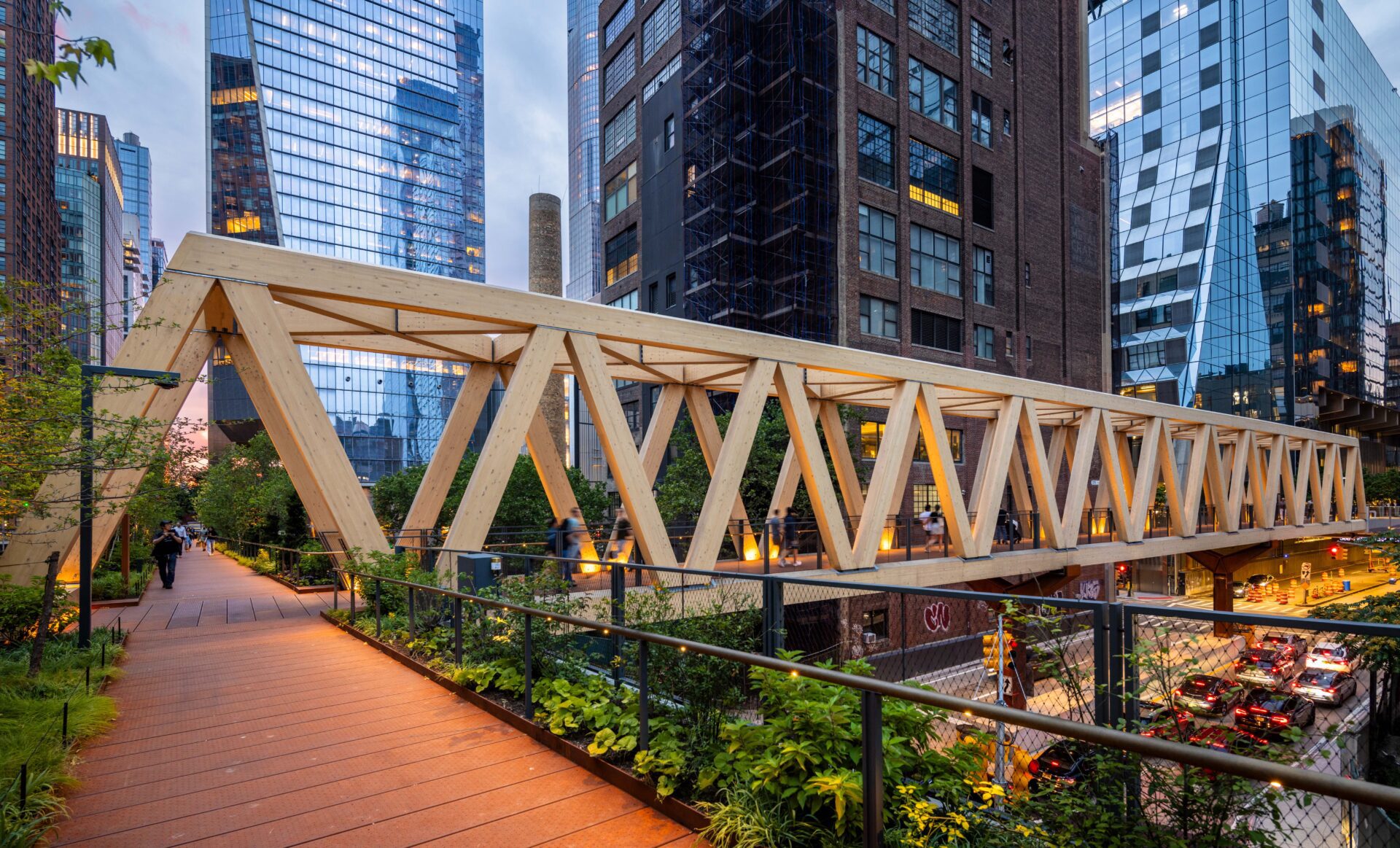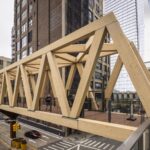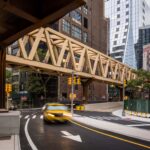The High Line Timber Bridge is one of two pedestrian bridges that make up the Moynihan Connector and is designed to seamlessly connect public open spaces to transit within the greater bustling urban landscape of Midtown West in New York City.
Situated within Manhattan West’s public plaza, the Timber Bridge is not only an architectural marvel but also a testament to the fusion of beauty and resilience. Sourced and imported from British Columbia, each beam of the Alaskan Yellow Cedar was assembled at street level. Once pieced together, the finished sections boasted a combined weight of approximately 256,700 pounds of mass timber. These colossal sections were then seamlessly lifted into their positions by cranes in mere hours. As time goes on, instead of being treated or painted, the wood will be left to weather naturally, allowing it to gracefully age to a silver patina, further enhancing its beauty in the urban landscape.
Using the Warren truss method, patented in 1848, which utilizes equilateral triangles, this design is a masterful blend of weight-efficiency and strength. The meticulous design required complex timber connections, specially crafted to guarantee water-tight joints. The engineering team’s commitment to excellence is evident; they went to great lengths to ensure the water tightness and the long-term durability of the bridge. This dedication is further showcased in the craftsmanship of certain elements, such as the rain caps. Additionally, the intricate manner in which all the connections are discreetly concealed within the wood demanded an exceptional level of care and effort. This precision was not limited to the factory alone but extended to the final field assembly, ensuring that nothing detracted from the seamless wood aesthetic. Furthermore, the bridge’s design incorporated additional triangular geometry on its top members and chords, a feature that swiftly displaces water, further contributing to its longevity.
Transporting the impressive 90 ft+ glulam members posed its own challenges. Originating from western Canada and destined for the eastern USA, the mammoth task of navigating the bustling streets of New York was addressed by employing a haul trailer equipped with a remote rear steerable dolly..









